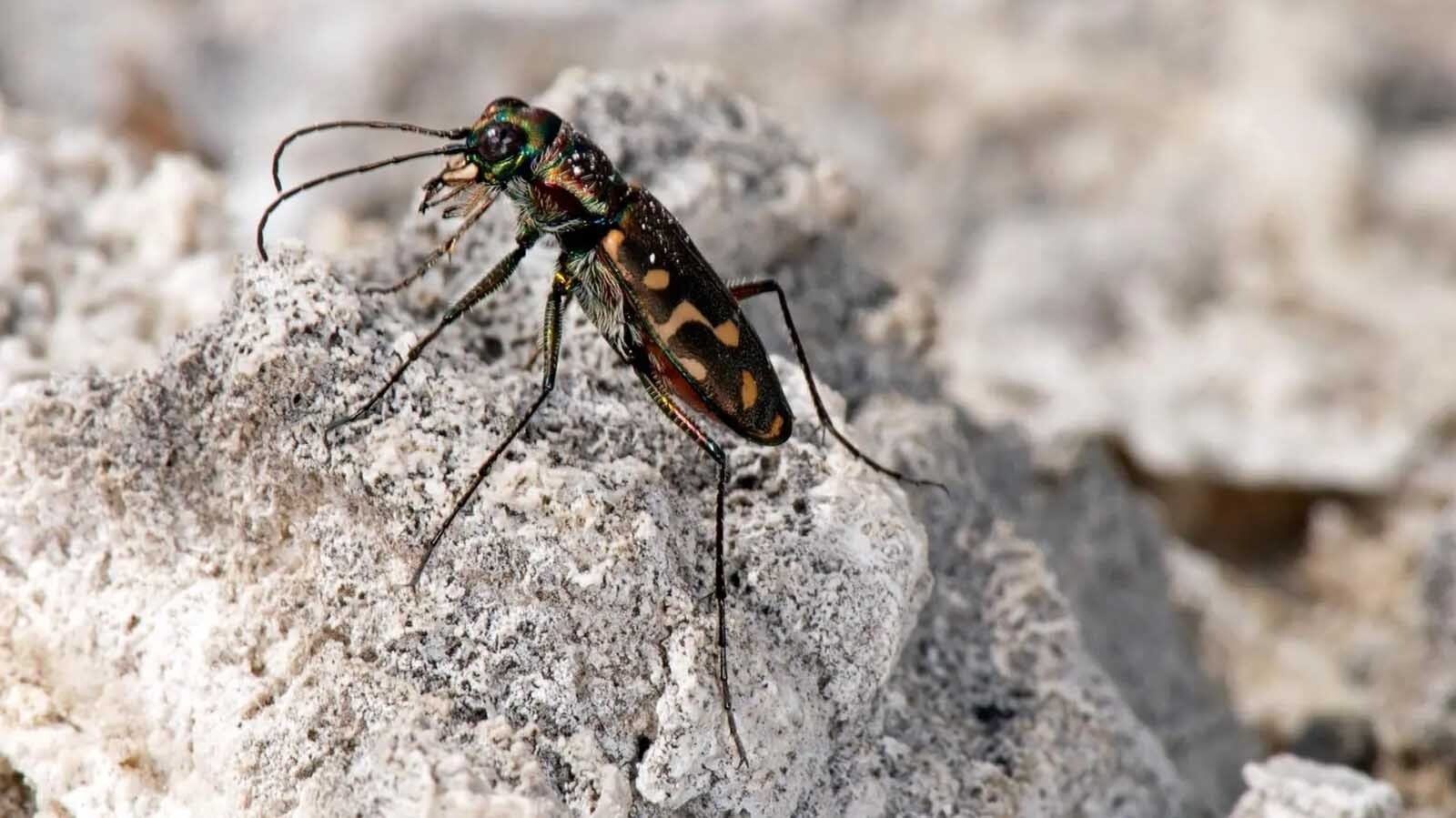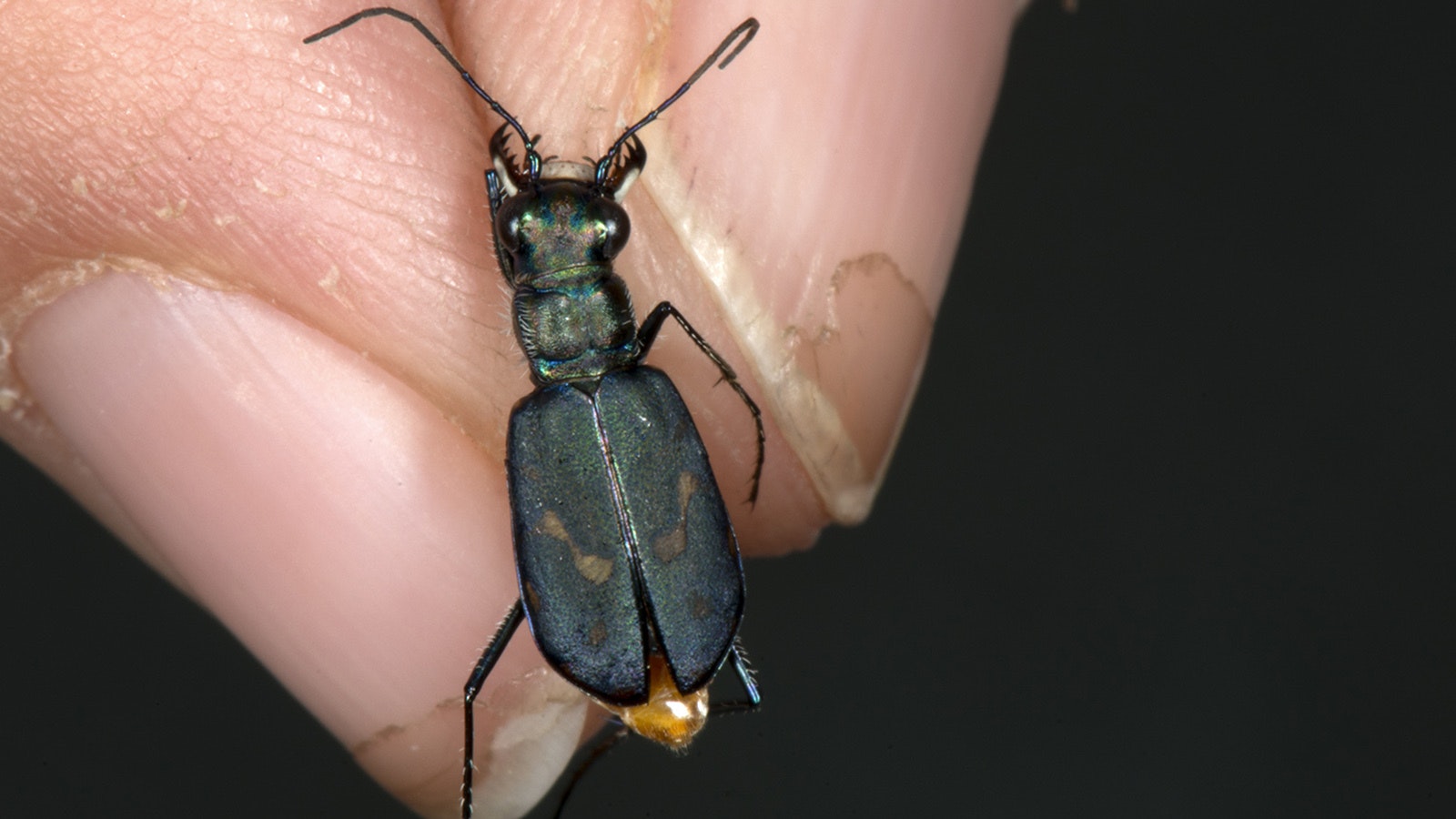A team of entomologists went into Yellowstone National Park to understand how a tiny beetle could thrive in an incredibly hostile environment. As a result, they discovered one of its secrets — and patented it.
The flora and fauna of the world have several unique adaptations to cope with extremes in their environment. “Bioprospecting” is the increasingly important process of figuring out how these adaptations can be adapted for humanity’s benefit.
The entomologists studying Yellowstone’s wetsalts tiger beetle weren’t expecting to develop an invention from their research. Nevertheless, the beetle’s biology led to a patentable concept that could improve some aspect of humanity, now or in the future.
“Here's a case where we can point to a beneficial and advantageous discovery that could potentially help the human cause,” said Robert Peterson, professor of entomology and head of the Department of Land Resources and Environmental Sciences at Montana State University. “And it came from something as esoteric as beetle research in Yellowstone.”
Warm-Adapted
Tiger beetles are apex predators of the insect world. While there are dozens of species worldwide, entomologists agreed that there was something unique about the beetles they spotted in Yellowstone National Park.
Leon Higley, a professor of applied ecology at the University of Nebraska–Lincoln, had that revelation when he visited Mammoth Hot Springs. He was marveling at the geothermal terraces when he noticed a wetsalts tiger beetle, not only surviving but thriving in a world where other animals fear to tread.
“I immediately knew something wasn't right,” he said. “It was just too hot. The beetle shouldn't be able to survive in those temperatures, but there it was.”
Along with Peterson and a team of other entomologists, Higley spent two decades studying wetlands tiger beetle populations dispersed throughout similar environments in Yellowstone. Higley was particularly interested in the lack of self-regulation behaviors in Yellowstone’s tiger beetles.
“Many tiger beetles will run into the shade, dip their abdomens in water, or use their legs to raise their bodies above the ground, called stilting, to regulate their temperature,” Higley said. “Yellowstone’s tiger beetles don’t do that.”
Despite their lack of self-regulation behaviors, the research team found Yellowstone’s tiger beetle populations to be thriving and robust. Tiger beetle populations are often indicators of a healthy ecosystem, so that’s an excellent sign for Yellowstone’s invertebrate diversity.
“There are relatively few species in these thermophilic ecosystems, but there’s enough sustenance for the apex predator of those ecosystems,” Peterson said. “It's important to understand how all the pieces fit together, and everywhere we found the right habitat in Yellowstone, we found tiger beetles.”

Portable Swamp Coolers
Yellowstone’s tiger beetles aren’t entirely devoid of self-regulating behaviors to beat the heat. Higley, Peterson, and the research team observed the park’s beetles utilizing a tried-and-true method of beating the heat of their habitat.
“One of the ways that tiger beetles can protect themselves is that they can dip their abdomen and get a little drop of water to hold on there,” Higley said. “That water actually cools them off and acts like a physical air conditioner.”
It sounds straightforward enough, but it isn’t. The exoskeletons of tiger beetles, like many insects, are covered in a layer of wax to prevent them from drying out.
Tiger beetles produce a lot of wax to retain internal moisture and protect their bodies, but that wax is inherently hydrophobic. Instead of absorbing water, it repels it.
“When water gets on an insect, it beads up and rolls off because the surface of their exoskeleton is hydrophobic,” Peterson said. “But warm-adapted tiger beetles are in conditions that are quite hot, so they want to use water to evaporatively cool themselves off.”
Despite the hydrophobic exoskeleton and waxy covering, Yellowstone’s tiger beetles were able to carry water with them as they traversed the hot springs. According to Higley, that shouldn’t be possible.
“There really is no way that they should be able to hold that droplet of water because their bodies are covered extensively with wax,” Higley said. “It turns out that tiger beetles have an absolutely unique mechanism that lets them hold water.”
Groovy Grooving
A closer look at the exoskeleton of Yellowstone’s tiger beetles revealed their secret to water retention. Their abdomens are covered with an extensive network of microscopic grooves, interlaced with hair-like protuberances. This “micro-grooving” allows the beetles to hold water on their hydrophobic exoskeletons.
“Instead of rolling off their hydrophobic exoskeleton, the beetles basically take water and spread it out using this unique feature,” Peterson said. “Instead of being hydrophobic, it makes (the exoskeleton) hydrophilic, or water-loving, and allows for greater evaporative cooling.”
This was more than a first-of-its-kind discovery. Yellowstone’s tiger beetles are the only population currently known to have this unique micro-grooving adaptation.
“It’s new to science,” Higley said. “It was fortuitous that we found that, but I guess it shouldn't be a surprise that we find very unique adaptations and discoveries in Yellowstone.”
The micro-grooving adaptation was so unique that it presented Higley, Peterson, and their colleagues with an unexpected opportunity. Since the microscopic structures on the tiger beetles’ abdomens had never been seen or studied before, it qualified as a patentable invention.
Beetles don’t apply for patents, but the researchers who study them are able and allowed to do just that. So, that’s what they resolved to do.
Patented
U.S. Patent No. 12,319,385 was awarded to “Higley et.al” on June 3, 2025. Its official description is “a process for establishing uniform liquid films on polar and non-polar substrates.”
Higley and Peterson are credited as the inventors of the patent, but the credit goes to the unique wetsalts tiger beetles of Yellowstone. The patent was the direct result of their beetle research.
Peterson described it as a classic example of beneficial bioprospecting.
“This was just one extension of our research,” he said. “The beauty of it all is that this feature might allow us to create products where you want to have a liquid spread out evenly on a hydrophobic surface, and it was only possible because of the research we did on this specific type of beetle.”
Patent paperwork is complicated. Higley said reading through the documentation is “a sure cure for insomnia.”
“I’m a co-inventor, and I can barely understand most of what it says,” he said.
The basic concept is that if a pattern of grooves or ridges is placed on a surface, with at least 10 nanometres (one billionth of a meter) apart, they can make a hydrophobic surface retain a uniform layer of liquid while remaining hydrophobic. In short, it allows a hydrophobic surface to have hydrophilic properties.
“The patent is for micro-grooving that allows wetting of otherwise water-repellent surfaces,” Higley said. “Think about how water is repelled off a piece of plastic. If you groove that plastic at a sufficiently small scale, it can actually hold a droplet of water.”
Patent Potential
What are the potential applications for this patent?
“I don't know whether we'll actually be able to find practical applications for it, but we're looking,” he said. “When you do science, there are a lot of basic and applied things that may come out, and this natural pattern might have some applications in human life.”
Higley speculated that their micro-grooving patent could be used as part of an innovative new method of insulation for buildings. Meanwhile, Peterson believes there’s exciting potential in the world of orthopedics.
“I think a great application could be using it on hip and shoulder replacements,” he said. “When you get one of those ball-and-socket joints replaced, you don’t want dry spots. You want bodily fluids to spread out on those surfaces.
"This technology might allow for the equal distribution of liquids on a metal ball-bearing that might be slightly hydrophobic.”
Higley and Peterson probably won’t be the ones to find the potentially revolutionary applications of their patents, seeing as they’re still enjoying their careers as entomologists. Still, their work can now be applied to various fields and technologies, where it could improve the lives of people worldwide.
And it all came from a warm-adapted beetle in Yellowstone National Park.

For Their World To Ours
Higley and Peterson aren’t finished exploring the mysteries of the wetsalts tiger beetles of Yellowstone. There are facets of its survival that they still want to understand.
“We think these beetles also have the ability to reflect infrared radiation,” Higley said. “The bottom of its abdomen acts like a giant reflector, reflecting infrared radiation away from its body so it doesn't heat up from the water, and we still don’t know the mechanism behind that.”
More research could result in more patents, as Yellowstone’s tiger beetles continue to reveal themselves as a unique population that’s highly adapted to hot, caustic environments.
For Peterson, the tiger beetle patent gives him and Higley something to point to. If anyone asks why anyone’s being funded to study a tiny beetle in Yellowstone, they now have something more than passionate lectures and research papers to show why their work is worthwhile.
“We are definitely being asked, more and more, what the point of our work is,” he said. “Are we wisely spending taxpayer dollars by doing research on something so esoteric? What good is this kind of thing?”
There are plenty of examples of how research into the natural world has contributed to humanity. Peterson acknowledged that he and many other scientists “need to do a better job” of communicating those discoveries and their implications to the public.
Nevertheless, Higley and Peterson’s patented micro-grooving technique is an excellent example of how the adaptations of a tiny beetle could improve our quality of life, even in a small way.
“This is a particular example of a beneficial, advantageous discovery to help the human cause, in addition to just generating new knowledge about our world and how things work in our world,” Peterson said. “We wouldn’t have this information if we hadn’t done this research.”
And, as far as Peterson is concerned, there’s more where that came from. Bioprospecting in Yellowstone has the potential to change the world.
“Yellowstone is a fantastic natural laboratory,” he said. “This discovery shows that our national parks serve many purposes. By studying these organisms, like Yellowstone’s tiger beetles, and their unique adaptations, we learn more about ourselves and the world we share with these organisms.
"But we can also discover things that we can use to improve our health and livelihoods through the discovery of new technologies that can help humanity.”
Andrew Rossi can be reached at arossi@cowboystatedaily.com.





